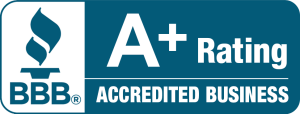Introduction
Excessive or incorrect payments in your retirement plan may not only indicate a lack of proper oversight but can also put your company at risk of a Department of Labor (DOL) audit.
The DOL is tasked with enforcing the Employee Retirement Income Security Act (ERISA), which governs employer-sponsored retirement plans. Failure to comply with ERISA regulations can result in severe penalties and fees.
To safeguard your company and employees, it is essential to recognize the red flags associated with excessive or incorrect payments and take corrective action. This article will delve into the facts, figures, and strategies you need to avoid problems with the DOL and ensure compliance with ERISA regulations.
The Significance of Excessive or Incorrect Payments
Retirement plans are intricate, involving various aspects such as employee contributions, employer matches, and vesting schedules. While occasional errors are inevitable, excessive or incorrect payments signal a deeper issue with your company’s processes and policies.
One example of incorrect payments that can occur is when employee deferral deposits are not made within 7 days of payroll. If not corrected in a timely fashion, then not only can an audit be triggered, but the participants may need to be made whole when markets go up.
There are, in fact, a number of scenarios that can cause payment errors, and it’s wise to have procedures in place and reviews performed to ensure these are being handled accurately and in a timely fashion.
According to a 2020 report by the DOL’s Employee Benefits Security Administration (EBSA), the DOL closed 1,122 civil investigations, with 754 (67%) of those cases resulting in monetary results for plans or other corrective action.1
This statistic emphasize the importance of identifying and addressing issues related to excessive or incorrect payments.
Potential Consequences of Excessive or Incorrect Payments
- DOL Audits – A history of excessive or incorrect payments can trigger a DOL audit, resulting in time-consuming scrutiny and potential penalties.
- Financial Penalties – Noncompliance with ERISA regulations can lead to significant financial penalties. ln 2020, EBSA recovered over $3.1 billion in direct payments to plans, participants, and beneficiaries.1
- Legal Repercussions – Companies may face litigation from plan participants, resulting in additional legal expenses and potential damages.
- Loss of Trust – Any type of incorrect or delayed payment can erode the confidence of employees in your company’s retirement plan administration, and by proxy trust in your company.
(1) https://www.dol.gov/sites/dolgov/files/EBSA/about-ebsa/our-activities/resource-center/fact-sheets/ebsa-monetary-results-2020.pdf
Strategies for Preventing Excessive or Incorrect Payments and Reducing Audit Risk
- Conduct Regular Audits – Implement internal or external audits of your retirement plan to detect excessive or incorrect payments early and take corrective action. This proactive approach can help mitigate the risk of a DOL audit.
- Improve Internal Controls – Enhance your company’s internal control systems to ensure accurate payments and minimize the risk of errors. This includes implementing proper checks and balances, segregation of duties, Ips well as Wear policies and procedures.
- Invest in Employee Education – Train employees involved in the administration of your retirement plan on ERISA regulations and compliance requirements. Regular training sessions and updates on regulatory changes can help maintain a culture of compliance within your organization.
- Leverage Technology – Utilize technology platforms to streamline retirement plan administration and minimize the likelihood of errors.
- Seek Professional Guidance – Engage the services of a qualified Financial Advisor, Third-Party Administrator (TPA), accountant, or attorney to help navigate the complexities of ERISA regulations and manage your company’s
retirement plan.
a. A trusted financial advisor can provide expert guidance on best practices, review current processes, and recommend improvements to minimize the risk of noncompliance and audits.
Taking Corrective Action
If your company has a history of excessive or incorrect payments, it is crucial to take immediate
corrective action. Some steps to consider include:
- Identifying and rectifying the underlying cause(s) of the errors.
- Reimbursing plan participants for any losses incurred due to incorrect payments.
- Implementing new processes and policies to prevent future errors.
- Conducting ongoing monitoring and assessment of your retirement plan administration to ensure compliance with
ERISA regulations. - Documenting all corrective actions taken and maintaining detailed records to demonstrate your company’s commitment to rectifying issues and adhering to regulations.
The Benefits of Proactive Compliance Management
Adopting a proactive approach to managing your company’s retirement plan and ensuring compliance with ERISA regulations can lead to significant benefits, such as:
- Reduced risk of DOL audits, penalties, and fees
- Greater peace of mind for business owners and plan fiduciaries
- Enhanced retirement plan performance and participant satisfaction
- Improved reputation and trust among employees.
The Importance of Vigilance and Collaboration
Managing your company’s retirement plan and ensuring compliance with ERISA regulations is an ongoing process that requires diligence, adaptability, and collaboration with trusted professionals.
By recognizing the red flags associated with excessive or incorrect payments and taking corrective action, you can minimize the risk of a DOL audit and protect your company and employees from potential legal and financial consequences.
Confidence Wealth Management specializes in assisting employers, trustees, and human resources professionals with obtaining an objective evaluation of their current employer-sponsored retirement plan performance. When necessary, we can also help you establish a new, properly structured plan.
We advise you on strategies to mitigate the risk of costly mistakes and overlooked plan components that could cause problems with the Department of Labor, their employees, or regulatory bodies.
Our firm focuses on optimizing plan design and implementing retirement plan services that guide you towards your goals.
To schedule an appointment and discuss your situation, click below or call us at (310) 820-4411.










